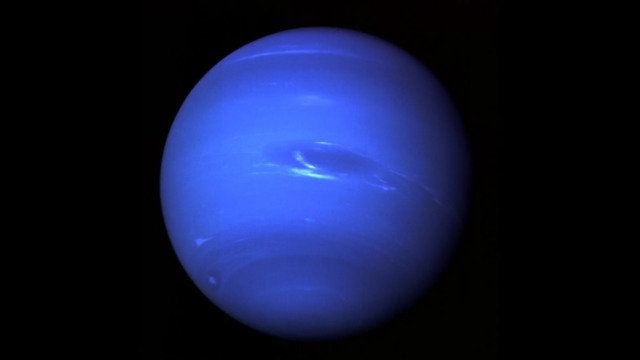Unknown moon was in orbit around Neptune. The Cosmos always surprises, my dudes!

Meet Hippocamp, motherfuckers! It is a previously-undetected moon in orbit around Neptune. And if that doesn’t get your tits glistening, I don’t know what will.
Gizmodo:
Introducing Hippocamp—a small Neptunian moon that has gone undetected until now.
New research published today in Nature describes a newly detected moon in orbit around Neptune. Named Hippocamp, it’s the ice giant’s seventh known inner moon and fourteenth moon in total. When NASA’s Voyager 2 spacecraft zoomed past Neptune in 1989, it imaged six previously unknown inner moons, but the probe missed at least one during its brief visit some 30 years ago, as the new research shows.
Using the Hubble Space Telescope and an innovative image processing technique, a team led by Mark Showalter from California’s SETI Institute was able to confirm its existence. Hippocamp is now Neptune’s smallest known moon, measuring just 20 miles (35 km) in diameter.
“The names of Neptune’s inner moons come from mythology of the seas,” Showalter told Gizmodo. “‘Hippocamp’ was approved by the International Astronomical Union because it is the name for that half-horse, half-fish creature that the god Neptune was often depicted riding on in Roman mosaics.”
He also recommended the name because “Hippocampus” is the scientific name for the seahorse. Showalter is an avid scuba diver who enjoys watching seahorses in their native habitat, so he was naturally “delighted” when the IAU approved his recommendation.
Astronomers classify Solar System moons into two general types, “regular” natural satellites like our Moon and “irregular” natural satellites, which are distant, captured asteroids in orbit around the four giant planets (Jupiter, Saturn, Neptune, and Uranus). The new study shows that Neptune has seven of these irregular moons. Jupiter, for example, has dozens. It’s not terribly unusual to detect irregular moons, whereas the discovery of regular moons is now quite rare; the last time a regular moon was discovered from Earth was in the early 2000s, when Showalter and his colleague Jack Lissauer from NASA Ames Research Center —a co-author of the new study—used the Hubble Space Telescope (HST) to detect two new moons around Uranus, an ice giant with at least 27 moons in total.
Needless to say, finding a 20-mile wide object around a planet some 2.7 billion miles away wasn’t easy. What’s more, in addition to the long distance and the small size of the object, the astronomers were challenged by the moon’s rapid orbital speed, which made it difficult to combine multiple images and prevent smearing.



